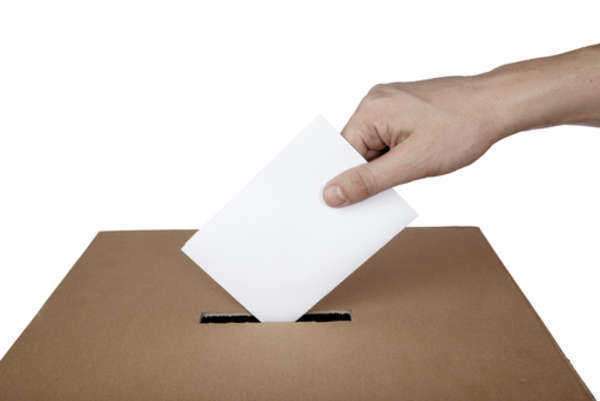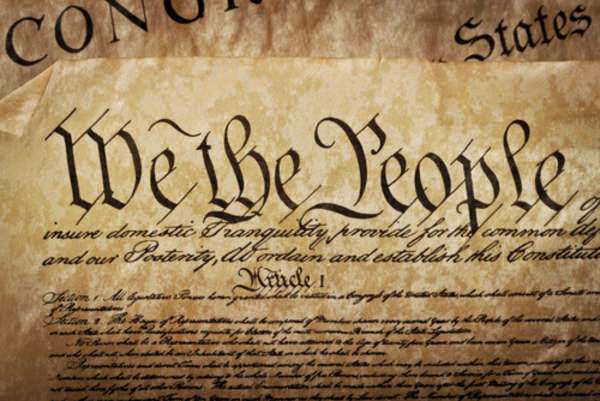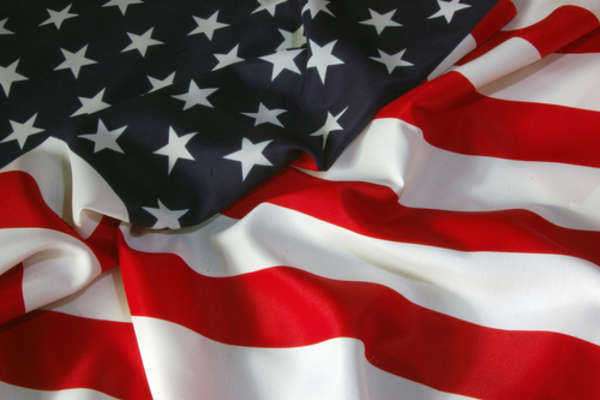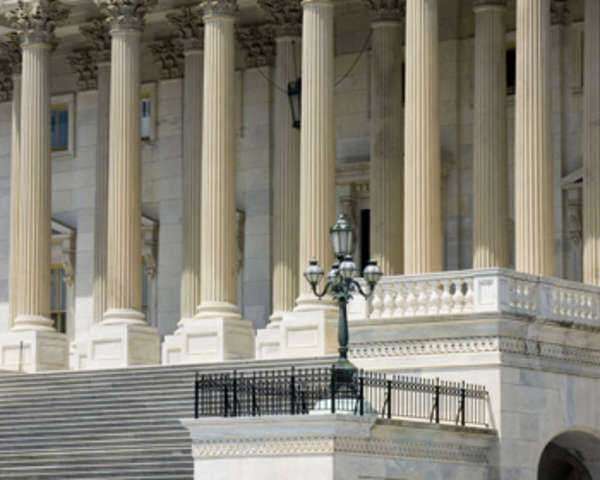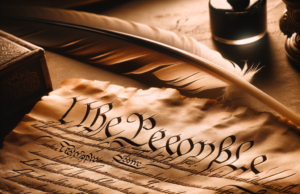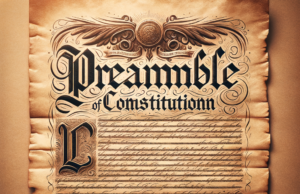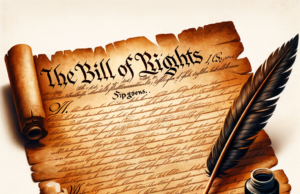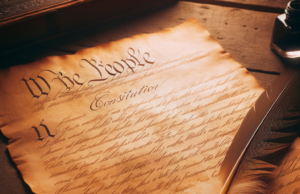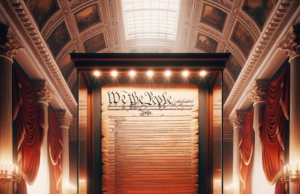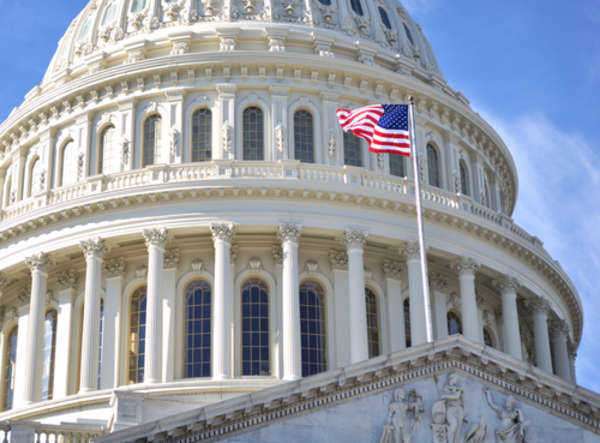
Introduction
The United States has a unique, indirect system for electing its president, called the Electoral College. The Electoral College is a group of electors, chosen by the respective political parties, who cast their vote for president and vice president of the United States. The Electoral College has been a controversial topic since its establishment, with some arguing that it is a necessary safeguard against majority tyranny, while others say it is undemocratic and needs to be abolished. In this article, we will explore the history, function, and criticisms of the Electoral College.
History of the Electoral College
The Electoral College was established in 1787 with the same document that created the United States Constitution, during the Constitutional Convention in Philadelphia. The founding fathers saw the Electoral College as a
compromise between those who wanted election by popular vote and those who wanted election by the House of Representatives. The Electoral College was also a way to balance the interests of small states against those of large states. Under this system, each state has a number of electors equal to its representation in Congress, with the exception of Washington D.C., which is awarded three electors as if it were a state.
The first Electoral College was held in 1789, and George Washington became the unanimous choice of the electors. However, in 1800, a political deadlock occurred between the candidates Thomas Jefferson and Aaron Burr, leading to the passage of the 12th Amendment in 1804, which established the current system of separate ballots for president and vice president.
Function of the Electoral College
Under the Electoral College system, voters in each state cast their ballots for the candidate of their choice. In 48 of the 50 states, the winner of the popular vote receives all the electoral votes for that state, while in Maine and Nebraska, electoral votes are awarded proportionally based on the popular vote. A candidate needs to win 270 out of 538 electoral votes to become president.
The Electoral College system gives smaller states an outsized role in presidential elections, as each state is awarded a minimum of three electoral votes, regardless of population. This means that a candidate can win the presidency by winning a majority of small states, even if they lose the popular vote.
Criticism of the Electoral College
One of the main criticisms of the Electoral College is that it is undemocratic. This is because it allows a candidate to win the presidency without winning the popular vote. This happened most recently in the 2016 presidential election, when Donald Trump won the Electoral College, but lost the popular vote to Hillary Clinton by nearly three million votes. This has led many to call for the abolition of the Electoral College and a switch to a system of direct popular vote.
Another criticism of the Electoral College is that it gives too much power to swing states, or those that can go either way in an election. This means that candidates will spend the majority of their time and resources campaigning in these states, at the expense of other states whose electoral votes are already decided. This has led to accusations of a lack of representation and a skewing of policy towards the interests of swing states.
A third criticism of the Electoral College is that it is a relic of the past, and does not reflect the modern political landscape. The system was established when the United States was much smaller and less diverse, and when communication and transportation were less efficient. Today, the Electoral College is seen by many as an outdated system that prevents the United States from truly reflecting the will of its citizens.
Defense of the Electoral College
Despite the criticisms of the Electoral College, some argue that it is a vital safeguard against the tyranny of the majority. This is because it ensures that candidates need to win a broad cross-section of support across the country, rather than simply winning heavily populated urban areas. The
Founding Fathers saw the Electoral College as a way to balance the interests of small and large states, and prevent the majority from dominating the political process.
Another defense of the Electoral College is that it helps to prevent electoral fraud, as it is much harder to manipulate the results of a presidential election through the Electoral College than through the popular vote. This is because in order to do so, a candidate would need to be able to manipulate the results in multiple states, rather than simply in one or two populous areas.
Finally, some argue that the Electoral College provides for a more orderly and predictable transition of power. Because the Electoral College meets several weeks after the presidential election, there is time for any legal challenges or disputes to be resolved before the president-elect takes office.
Reforming the Electoral College
While some defend the Electoral College as an essential part of American democracy, many see it as a system that needs to be reformed or abolished. There have been numerous proposals for reform over the years, including the National Popular Vote Interstate Compact, which would award all of a state’s electoral votes to the winner of the national popular vote, regardless of the outcome in that state. This proposal has been adopted by 16 states and the District of Columbia, representing a total of 196 electoral votes. However, it will only go into effect if states representing 270 electoral votes join the agreement, which has not yet happened.
Another proposal for reform is a system of ranked-choice voting, where voters rank the candidates in order of preference, and the candidate with the most votes after several rounds of tabulation is declared the winner. This system has been used successfully in other countries, and could provide for a more representative and democratic outcome in presidential elections.
Conclusion
The Electoral College has been a controversial topic since its establishment, with supporters arguing that it is a necessary safeguard against majority tyranny, and critics arguing that it is undemocratic and in need of reform or abolition. While the system has flaws, it also has defenders who see it as an essential element of American democracy. Ultimately, the fate of the Electoral College will depend on the outcome of ongoing debates and political and legal challenges.
The electoral college is one of the most important elements of the modern American political system, as it determines exactly how the President of the United States is elected.
Considering that the President holds the powers of the executive branch of the American Government, the process to elect the President is of great significance to any American citizen, not least because American citizens have a say in the election of the President. But exactly how Americans are able to affect the election of the President depends entirely on the rules of the electoral college system, which does not allow for as much direct influence as many Americans may imagine.
Electoral College Background
Indirect Popular Voting
The Electoral College system is an indirect system of voting. Under the Electoral College, American citizens are voting for an elector, who would then vote for the President. Those citizens are not directly voting for the President. The framers of the Constitution had a number of different reasons for doing this. Some of those reasons were embedded firmly in the nature of the time period in which the Constitution was written.
For example, a direct election would have been impractical for the time. Collecting all the votes of all the citizens and then tabulating those votes would have taken inordinate amounts of time to do as a single, direct election. By splitting it into an Electoral College system, in which each citizen is effectively voting within his or her State, the system became much more easily managed.
Additionally, the framers of the Constitution were attempting to prevent too much power from being directly put into the hands of the public. They were consistently wary of any one party having too much power, and there was no difference between a tyranny of one individual and a tyranny of the majority, in their opinion. The Electoral College system was designed so as to nullify some of the potentials for the tyranny of the majority by making the population less important in the whole of the Electoral College process. For more information about the indirect voting system of the Electoral College and its advantages and disadvantages, follow the link.
Reaching Proper Majority
The framers of the Constitution decided not to have a system based on plurality for similar reasons to those for making the Electoral College in the first place. A presidential election system based on plurality would give the election to the candidate or party that had the most votes in the election, regardless of whether or not that candidate or party received a majority of votes. Instead of a plurality, then, the framers of the Constitution made an absolute majority the means of winning the presidential election.
To win an absolute majority, a candidate must have over half of the total possible votes in the system. This would, therefore, count as “possible votes” all abstentions. Using a system based on achieving an absolute majority does ensure that the President-Elect was elected by a majority of the country, instead of simply being the most popular out of a number of low-popularity candidates.
In most elections, obviously, only one candidate can achieve an absolute majority, but in all elections, it is always possible that no candidate would achieve an absolute majority. This is because the American system allows for more than two candidates to run, which means that each of the three candidates might get a third of the total votes, or each of four candidates might get a quarter of the total votes. In any such situation, no candidate would have earned enough votes to win an absolute majority.
In such a case, Article Two of the Constitution and the Twelfth Amendment provide for the House of Representatives to take over the election. The House would vote on which of the three candidates receiving the most electoral votes should become the President. To find out more about the nature of a system based on achieving an absolute majority of votes, click the link.
Debates over Systematic Reform
The Electoral College system is not perfect, and certainly has a number of flaws. The framers of the Constitution who chose to employ the system likely did not envision it as a perfect system, but many of the flaws that have become apparent over the years were likely entirely unanticipated by those framers. For example, some of the reasoning behind the Electoral College’s implementation, such as the sheer impracticality of collecting and tabulating the votes of all citizens in a direct election, have been circumvented in the modern world by advanced communications technology and computing technology. Where those may once have been practical concerns, they are now no longer significant.
Furthermore, the current system of the campaign in America effectively “games” the Electoral College system, such that candidates will focus their time, effort, and money on only certain swing states as opposed to states in general. These swing states seem to bear more significance to the election as a whole as well, primarily because a State that is very predisposed towards voting for a particular candidate or a particular party’s set of electors will be less significant as far as a candidate’s campaign strategy goes. The swing states will be the primary determinants of the election, as opposed to the states that are firmly entrenched in voting for one party or another.
Further criticism includes the fact that the electoral college system actually devalues the individual vote and discourages voter turnout because every voter’s vote only matters in the context of his or her own State. As long as that State is likely to vote for his or her choice of a candidate anyway, then his or her vote is less significant. If his or her State is likely to vote against his or her choice of candidate, then his or her vote is similarly less significant, primarily because he or she would be unlikely to change the disposition of his or her State of the State was polarized enough. Follow the link to learn more about some of the criticisms of the Electoral College system, and how some are attempting to solve these problems.
Election of 1876
The election of 1876 was an early example of a voting controversy, in which difficulty in counting and tabulating votes led to difficulty in determining who was the victorious candidate in the election. Rutherford B. Hayes was running against Samuel J. Tilden, and in the election, Tilden seemed to win the popular vote, while the electoral vote was indeterminate. The reason for this indeterminacy came from an error in three states’ submissions of results concerning the election.
Each State submitted two sets of results, one in favor of Hayes and one in favor of Tilden. Determining which set of results was correct was no easy task, and because the race was so close throughout the rest of the nation, the determination of these results would govern the course of the election.
In order to determine which candidate was to be elected, an Electoral Commission was appointed. But this Commission was something of a farce if only because it was made up of 7 members each of both parties and those members voted along their party lines. The deciding vote came from a Supreme Court Justice who similarly voted along party lines. The real determination of the election is attributed to dealing behind the scenes, in which Tilden was convinced not to contest the findings of the Electoral Commission in favor of Rutherford B. Hayes in exchange for certain political favors from Hayes when Hayes became President.
But this election stands out as one of the most controversial in American history, and as one of the few elections in which the candidate who won the popular vote, Tilden, did not win the presidency. For more information about the election of 1876 and its controversy, click the link.
Election of 1888
The election of 1888 was noteworthy only because the candidate who won the election did not win the popular vote, which is an oft-considered consequence of the Electoral College system. The two candidates in the election were Grover Cleveland and Benjamin Harrison. Grover Cleveland, the incumbent, lost the election to Benjamin Harrison, despite winning more of the popular vote. This was more attributable to the fact that the election was a remarkably close race than it was attributable to anything else.
Grover Cleveland lost his own State of New York by a 1% margin, which gave Harrison the necessary votes to beat Cleveland. But Cleveland, in turn, won 24 of his votes from different states where he only won by a 1% margin as well. This election demonstrated the important principle that the only times when the candidate who wins the popular vote does not win the electoral vote are in those races which are remarkably close. Any race with a greater margin of victory would be very unlikely to result in the same kind of outcome.
This election was also perfectly legitimate, with no controversy as to its outcome. Though Grover Cleveland did lose his home State by such a small margin, there was no doubt that he did lose and that Harrison had successfully won the election. To learn more about this election and how it fits into the overall scheme of historic elections in America, follow the link.
Election of 2000
The election of 2000 was an incredibly contentious election, in which the results were debated and argued over for quite a long time before it was finally resolved. The two candidates involved in the election were George W. Bush and Al Gore. It was yet another election in which the winner of the popular vote did not win the electoral vote, and, like the election of 1888, it was another extremely close race. That is the source of the main controversy surrounding the election.
The election was so close that a miscount in an important State could have spelled disaster for either of the involved candidates. Unfortunately, there was evidence of just such a miscount in Florida due to some difficulties in the counting process. As a result, the actual determination of the election’s victor dragged on for a month, for much longer than it normally would have gone. Al Gore had more of the popular vote, but Florida offered up 25 electoral votes, which was enough to put either candidate over the top and give that candidate the presidency.
Florida’s votes eventually appeared to go to Bush, but Gore contested this countless times, as some votes from certain counties in Florida were not tabulated into the overall results because those counties had not had enough time to complete their recounts. Gore eventually wound up taking the case to the Florida Supreme Court, and even the United States Supreme Court, in an attempt to get time for a recount. Eventually, however, the courts decided against a recount and instead ordered a decision. George W. Bush won the election, as a result, even though Bush had not won the popular vote.
The election stands out as one of the most controversial elections of the past hundred years and even in the country’s history as a whole. It raised important issues about exactly what the procedure should be in situations where a recount is necessary. Click the link for more about the election of 2000 and its many problems and controversies.
Procedures When the Majority is Not Met
When the absolute majority necessary for a successful presidential win is not actually met by any presidential candidate, Article Two of the Constitution provides the necessary procedures for completing the election. The election would actually go to the House of Representatives, which would have its own vote to determine which of the three candidates receiving the most electoral votes would win the election. This has only happened twice in American history, though it almost happened for the third time in the election of 2000.
The first time it occurred was in the election of 1800 before the Twelfth Amendment had been passed. In this case, the situation was even more problematic because the system of the Electoral College was different than most understand it today. Electors today get one vote for the President and one vote for the Vice-President, thanks to the Twelfth Amendment. But in 1800, electors voted twice, for two presidential candidates.
The candidate with the second most amount of electoral votes would become the Vice-President. This also meant that, although parties would put forward one candidate as the President and one as the Vice-President with the intent that each only fills the originally conceived role, there was no rule necessitating that outcome. As a result, in 1800 two candidates tied in electoral votes with neither getting the necessary majority. The decision went to the House of Representatives, then, according to the rules of the Constitution. The Twelfth Amendment was passed as a result.
This situation cropped up again in 1824 when four different candidates ran from the same party and none of them won an absolute majority. The decision again went to the House of Representatives, but this time they decided upon a candidate who had won neither the plurality of electoral votes nor the plurality of popular votes. The solution for these situations, of turning the election over to the House of Representatives, however, was shown to be effective and functional. For more information about each of these elections and the general procedures for what happens in the electoral college system when no candidate earns an absolute majority, follow the link.
